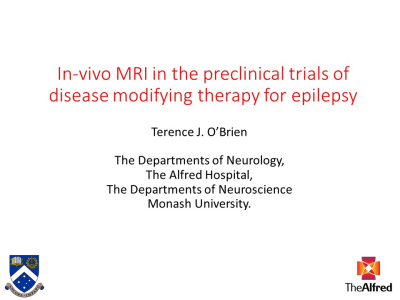Weekend Educational Session
MRI & Epilepsy: Diagnosis & Treatment of the Epileptogenic Zone
| Saturday Parallel 3 Live Q&A | Saturday, 8 August 2020, 14:00 - 14:30 UTC | Moderators: Quantitative & Treatment: Esin Ozturk-Isik Imaging in Epilepsy: Clinical & Preclinical: Kader Oguz |
Session Number: WE-07
Overview
This course is intended to provide a state-of-art review of the role of MRI in localizing and treating the epileptogenic zone in patients with drug refractory epilepsy.
Target Audience
Scientists, radiologists, and clinicians involved with imaging and treating patients with epilepsy.
Educational Objectives
As a result of attending this course, participants should be able to:
- Demonstrate a basic understanding of the pathology of epilepsy and differences between pediatric and adult patients;
- Distinguish which pulse sequences are useful for identifying the epileptogenic zone;
- Explain how MRI combines with functional techniques to improve detection of the epileptogenic zone; and
- Describe how MR-guidance is used to treat epilepsy.
| Imaging in Epilepsy: Clinical & Preclinical | ||
| Clinical Review
John Stern
|
||
 |
Animal Model
Terence O'Brien
Epilepsy the most common, serious chronic neurological disease worldwide, affecting 50 million people globally. Current treatment with anti-seizure drugs (ASD) is symptomatic, suppressing seizures, while the medication is being taken at appropriate doses, but having sustained effects, and no effects on the accompanying comorbidities. More than a third of patients with PTE do not have their seizures controlled with currently available ASDs. In-vivo neuroimaging, in particular MRI, is a highly valuable tool in the pre-clinical testing of potential disease modifying treatments for epilepsy, allowing serial assessments of brain structure and function to evaluate the long-term effects of the treatment.
|
|
| Resting-State fMRI & Brain Connectivity
Olli Gröhn
Functional connectivity fMRI studies in animal models of epilepsy allow assessment of reorganization of networks already before occurrence of spontaneous seizures. Extreme care has to be taken when planning fMRI experiment especially regarding anesthesia and physiological monitoring. New technological advances such as implantable RF-coils, and radial zero echo time imaging provide solutions to many of the existing problems and make awake fMRI approaches more accessible
|
||
| Quantitative & Treatment | ||
| MR-Guided Therapy
Robert Watson
|
||
 |
MRI Post-Processing & MR Fingerprinting in Epilepsy Pre-Surgical Evaluation
Jianhui Zhong
OUTLINE: •Why MRF and how it is used in epilepsy •Some technical aspects of MRF •Other clinical use of MRF •Further tech development •Challenges and future of clinical MRF |
|
| MR Spectroscopy
Jullie Pan
|
||
| PET/MR
Timothy Shepherd
|
||
| Imaging in Epilepsy: Clinical & Preclinical | ||
 |
Clinical 7-Tesla MRI for Epilepsy
Kirk Welker
Clinical 7T MRI is a relatively new tool for the evaluation of medically refractory epilepsy. Offering improved signal to noise ratio and spatial resolution over MRI at 1.5 and 3.0 Tesla field strengths, 7T MRI can potentially identify very subtle epileptogenic lesions such as cortical dysplasias in patients that have previously been classified as "MRI negative". Additional epileptogenic pathologies better demonstrated with 7T MRI include mesial temporal sclerosis, tuberous sclerosis, and cavernomas. 7T fMRI may improve mapping of eloquent cortex in preparation for epilepsy surgery. Ongoing challenges with this technique include B1 inhomogeneity artifacts and safety concerns regarding metallic implants . |
|

 Back to Program-at-a-Glance
Back to Program-at-a-Glance Watch the Video
Watch the Video Back to Top
Back to Top